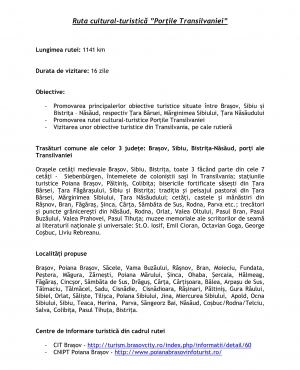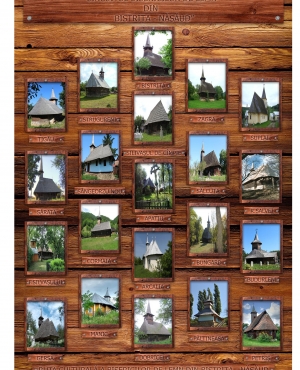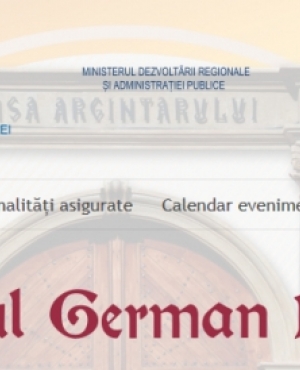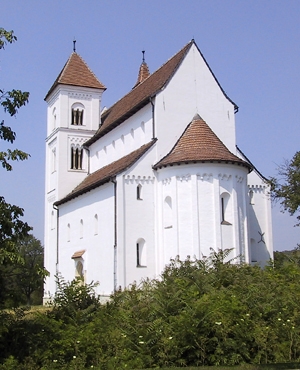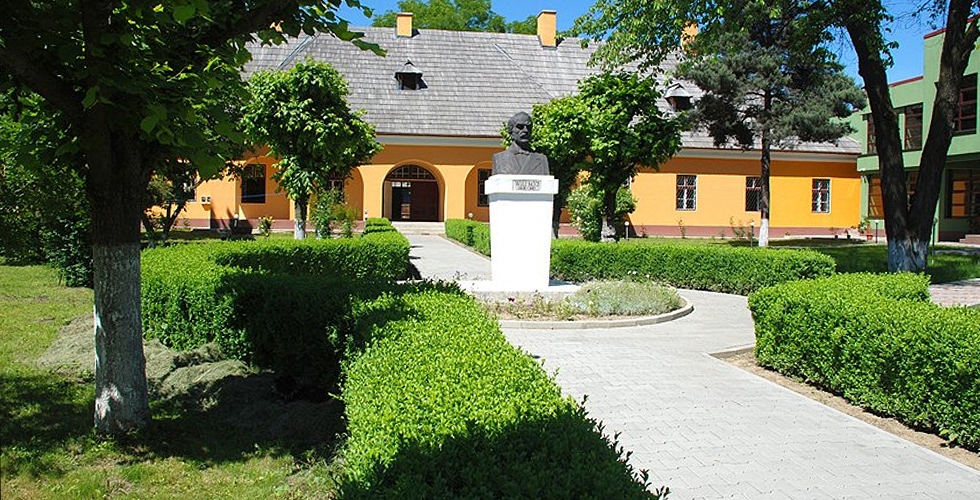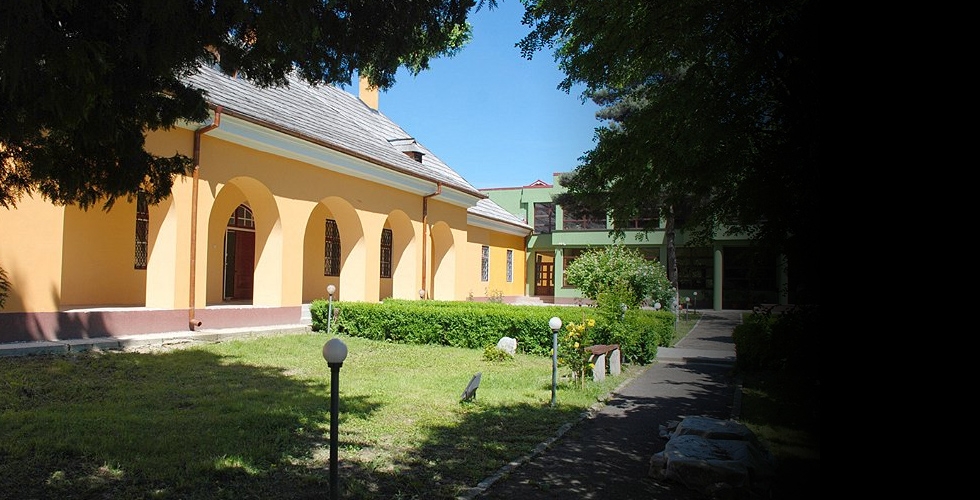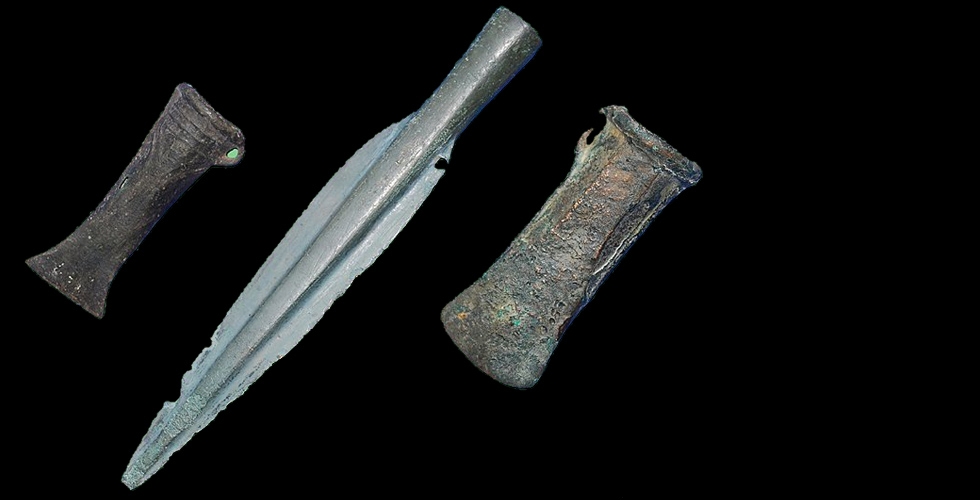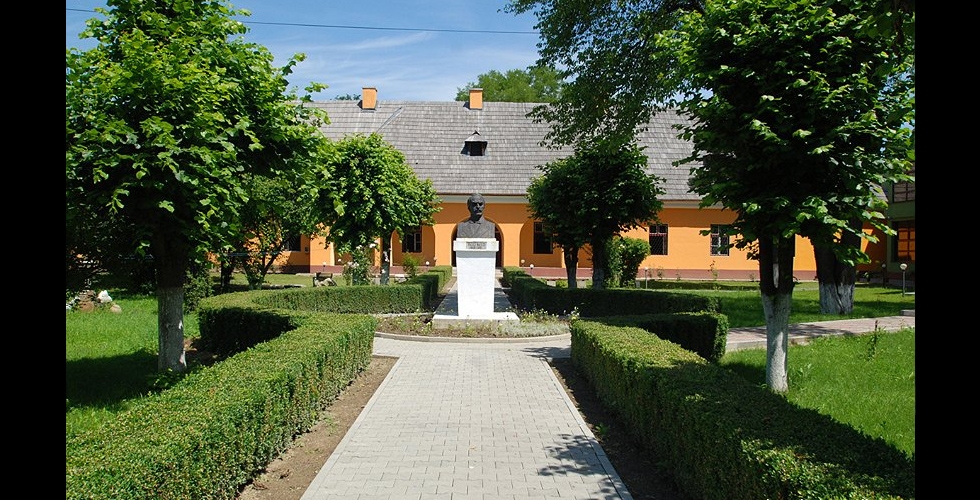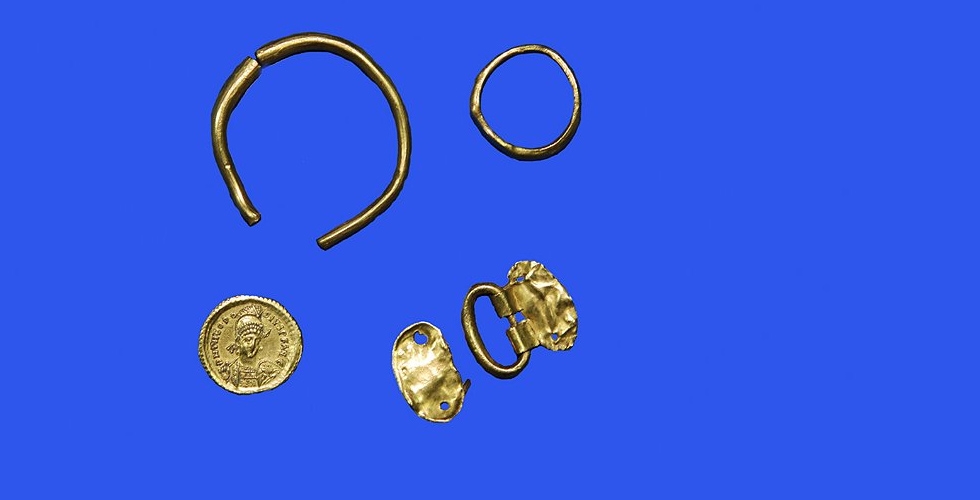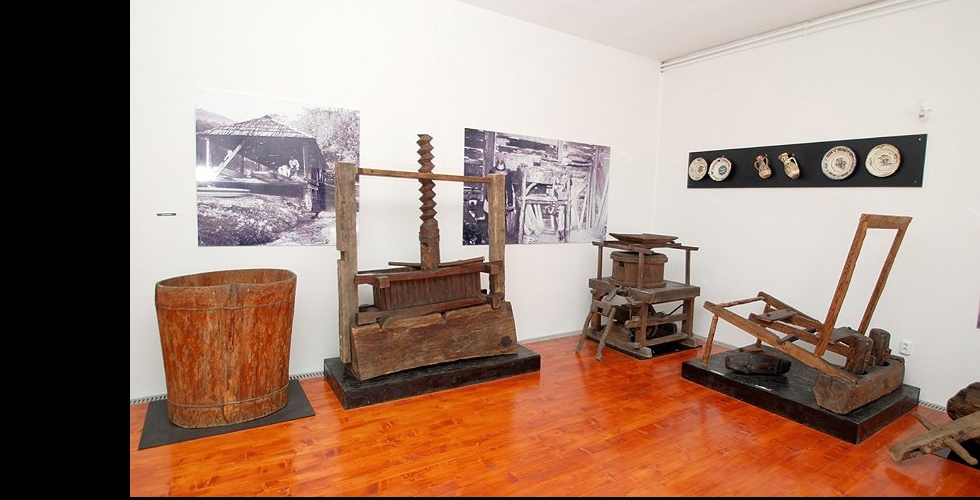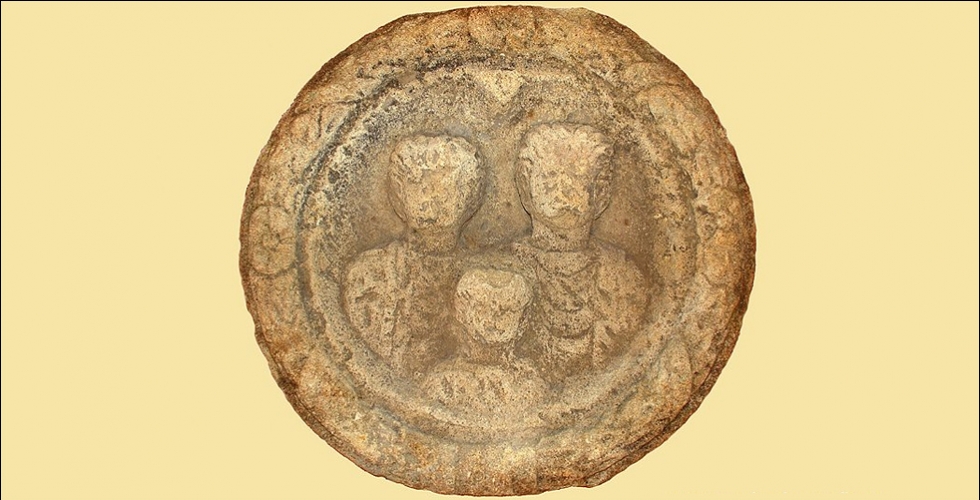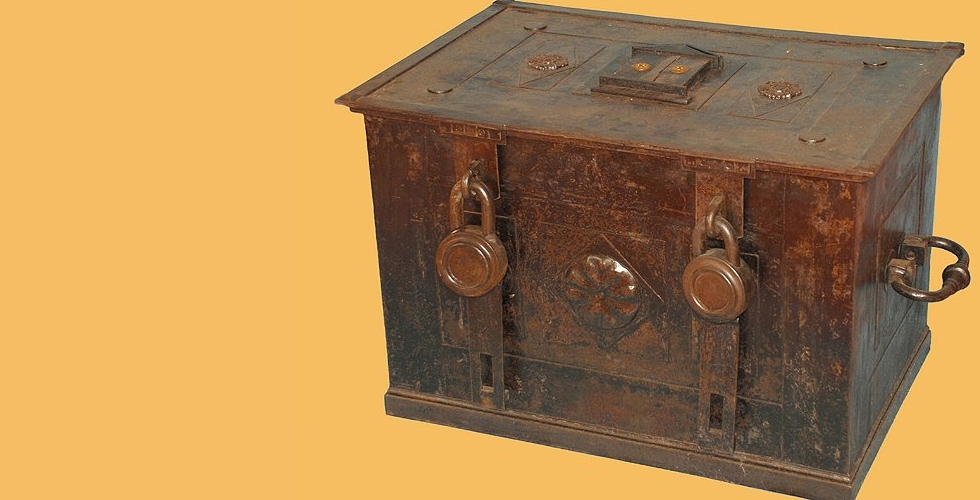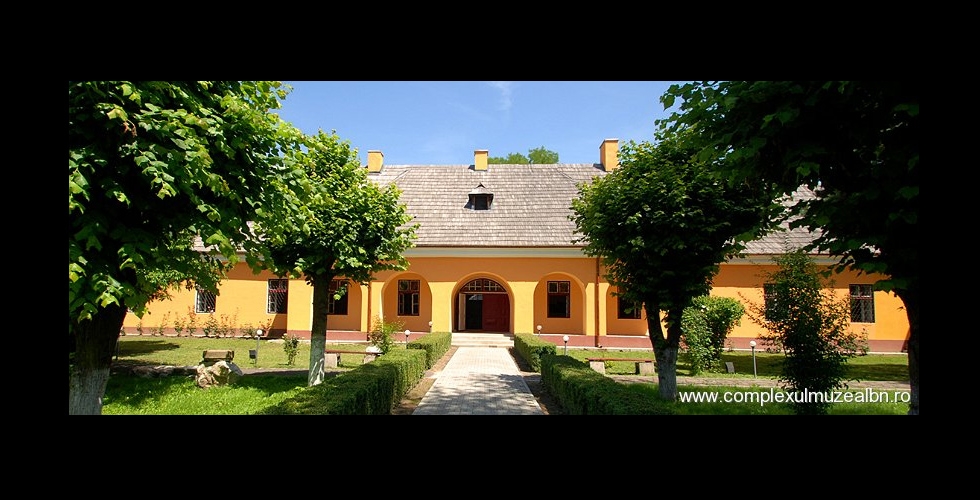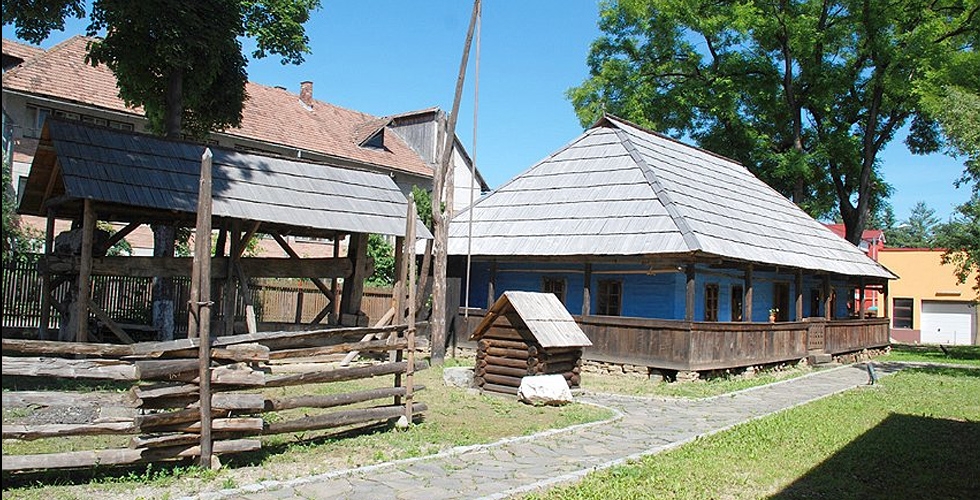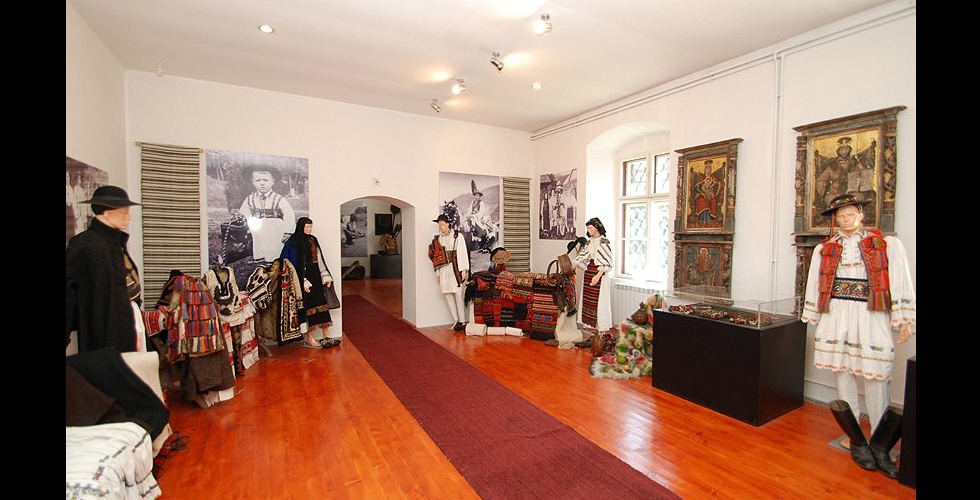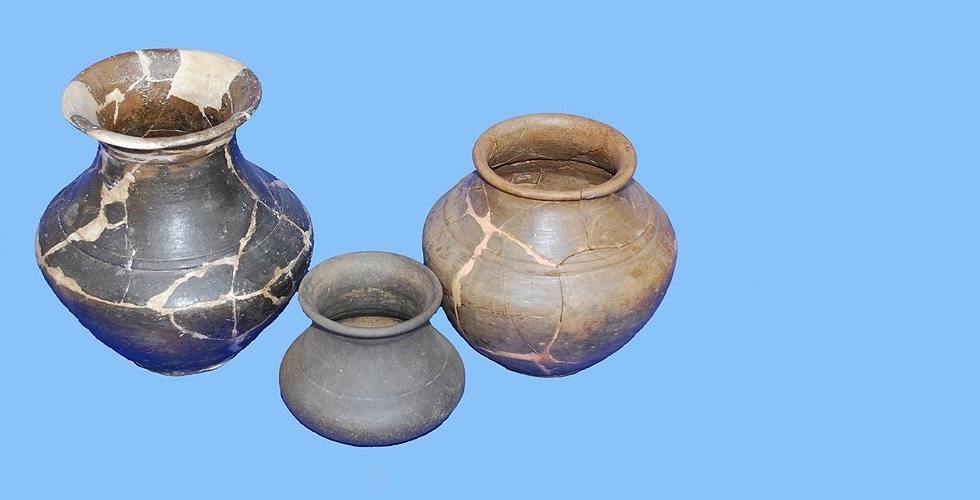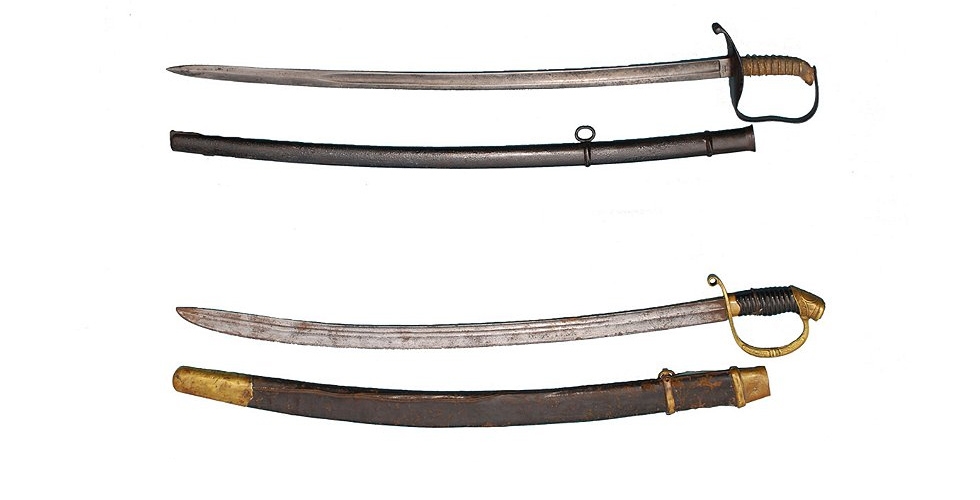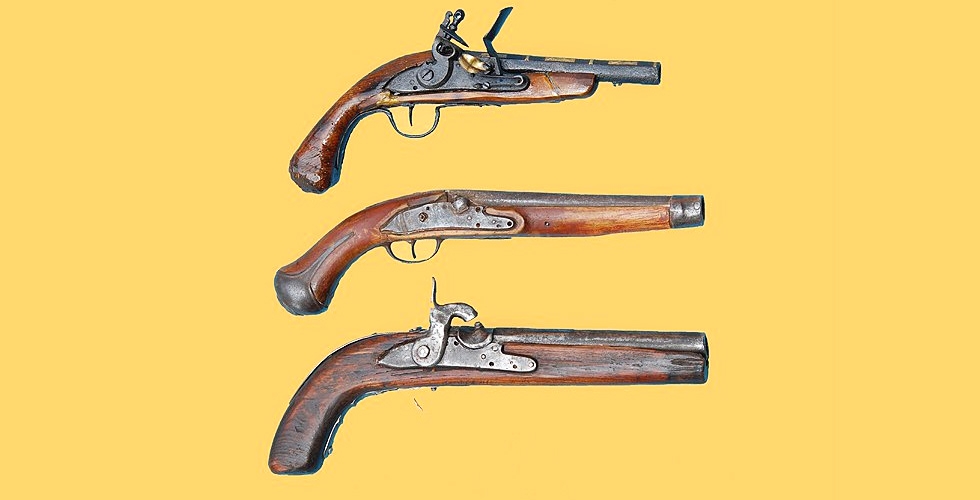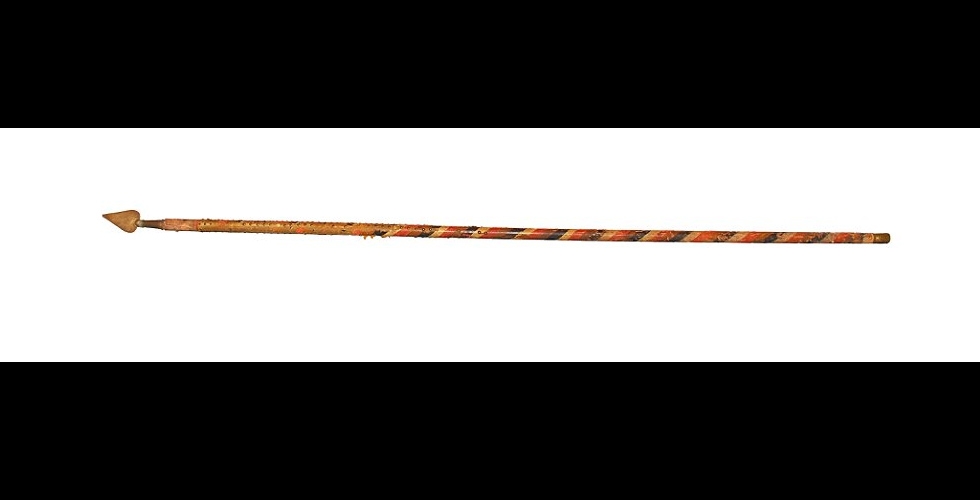Intr-un muzeu daca dorim sa venim in intampinarea dorintelor beneficiarilor de diverse tipuri este important sa tine
Border Museum Năsăud
You are here
Border Museum Năsăud
Preoccupations in view of setting up a museum in the city Năsăud existed as early as the second half of the 19th century. On December 24th 1873 the vice-captain of the district – Florian Porcius, sends a letter to the director of the Superior Greek – Catholic Gymnasium from Năsăud announcing him about the decision of the District Representative Committee to set up in the District Năsăud a “Reunion of Science and Museum”.
In this letter he appeals to the intellectuals of the city to register as members of the respective reunion. Because the idea to set up a Romanian cultural institution didn’t fit to the denationalization attitude promoted by the authorities of the Austrian – Hungarian Empire, the museum remained just a project. Still, the appeal made by Florian Porcius did not remain without result.
As such, by the end of the school year 1873-1874, the library of the gymnasium received a donation of numerous books. To the department of natural sciences was donated the mineral collection of 1060 pieces of Knight De Manz; it will also get richer with the important herbarium of Florian Porcius.
After a while, some of the important professors of the gymnasium decide the constitution within this school, of several exhibitions containing objects found by professors and students during archeological diggings or that were occasionally discovered by private persons and then offered to the school.
These are the firsts attempts to put together in a documentary exhibition, values of Nasaud’s culture. After the Great Union from December 1st 1918, the discussions were restarted to set up the Nasaud Museum.
In 1923, at the initiative of a group of scholars from Nasaud, led by Iulian Marţian, there was decided the setting up of the museum. For this purpose there is published a certification stating that the Ministry of Arts agrees to set up a regional museum in Năsăud, museum that was to be temporarily accommodated in one of the rooms of the Border High School „George Coşbuc” in Nasaud. There was made an appeal to the persons possessing books, manuscripts, drawings, paintings, coins, clay-vessels, old folk webs, instruments, folk-technique objects of any kind or any other objects willing to donate or sell to this institution.
On the long run the enthusiasm settled, and starting with 1926 the objects raising action for the endowment of the museum is practically stopped. On the other side, one has to remind the setting up in 1924, at the initiative of Iuliu Moisil, Virgil Şotropa and Iulian Marţian, of the historical – cultural magazine Arhiva Someşană. In this magazine there was clearly stated the necessity of an extension of the research activity concerning the border area and of exhibiting and valuating the relicts of the past within a specialized institution.
Things are moving towards a favorable solution after the election of Iuliu Moisil as president of Despărţământul Năsăud al „Astrei” (Astra of the District Nasaud). This, together with Virgil Şotropa, Iulian Marţian, dr. Alexa David and dr. Artene Mureşan made the decision to set up the museum immediately.
In the afternoon of August 2nd 1931, the five mentioned earlier, gathered in the house of Major Iulian Marţian and decided the setting up of Nasaud Museum. For this purpose they donated to the recently set up institution, collections of documents, of manuscripts, of publications, diplomas, books and other museum objects, objects gathered along their lives, all of them, their private property.
Iuliu Moisil states the purpose of the museum: „The purpose of this museum is to set up a center around which to group all those wishing to contribute to the study and exploration of our region out of different view-points: pre-historical, historical, touristic, of natural sciences, hygienic, scholar, agricultural, industrial, patriotic – in order to develop the population of this region the taste for history, literature, arts and science, to create and organize the necessary mentality for the cultural and economic rise of the region”.
Following the appeal of the founders, the Administrative Committee of the Administration of Border Funds Nasaud approves in the same year 1931, the awarding of two rooms within the building of the former dormitory of „George Coşbuc” Gymnasium in Năsăud, in order to set up a museum and a library.
After that, there began the manufacturing of the necessary furniture and the arranging of the firsts collections received of donations. In this building, the Museum will function until October 1st 1948.
Thanks to the donations made by well-intended, culture-loving persons, the documentary fund will keep on increasing so that, in 1937 the Arhiva Somesana Magazine states that the Museum in Nasaud disposes of four sections:
I. The library, possessing a greater number of books, most of them old, received as collections from different persons, majority professors.
II. An archive rich in documents, manuscripts, correspondence about the history and representative persons from the region of Nasaud.
III. Collections of different museum objects.
IV. Portraits of leaders of the border-patrol and photographs. On February 6th 1932 there was laid the basis of the cultural institution Nasaud Museum, on this occasion the status of this institution is being drawn out.
In order to increase the authority of the museum and in order to improve the functioning conditions, the founders insist to transform the institution belong to the state. Following the approach made by Iuliu Moisil, the General Direction of State Archives, in its decision no. 191198/1937, published in the Official Paper no. 269, sets up in November 1937 a Sub-Direction of the State Archives in the city Nasaud.
This new institution comprised:
a) all old archives of the civil, religious and military authorities of the state, county and villages in the actual district of Nasaud;
b) the archive, the library and the museum objects of the Nasaud Museum Society, starting with the moment when they will be donated to the state;
c) the archives and the libraries of the border institutions and of the private persons in the county that will be deposited at this Sub-Direction.
In the donation document made by the founders of the museum, there is stated that both the archive and the museum and the library that will be donated are not allowed to be alienated or brought to another place, but are to remain forever in the city Nasaud. The main publicity organ of the museum was the magazine Arhiva Somesana (Archive of the Somes Valley), appearing in Nasaud under the supervision of Virgil Şotropa. The retired professor Iuliu Moisil fulfilled, without any retribution, the position of museum director.
During the hortyst occupation of Transylvania (1940-1944) and then during the folding back of the hortyst troops (during the fall of 1944), the collections of the museum were devastated, destroyed and even alienated by the foreign invaders.
On October 1st 1948, the Administration of Border Funds, in process of liquidation, grants to the State Archives in the city Nasaud, for the purpose of museum objects, library and archives, the building of the former Hotel Rahova (building that once accommodated Casina). The granting was made by awarding the right to use free of charge
At the ground floor of this building, there was organized, after a year, in five spacy rooms, an exhibition with historic and ethnographic character. This exhibition will constitute the heart of the later museum, museum that, as state budget institution, will open its doors in the year 1950.
The entire museum collection (that in the meantime grew richer after numerous private donations) will move in the year 1951 in the old building of „Şvardei”, where it still resides. The first name was Regional Museum Cluj, then the Nasaud Museum and now is Nasaud Border Museum.
Concerning the actual building of the museum, one has to mention that „Şvarda” is the former barrack of the II Romanian Border Regiment: a massive building that is historic monument.
It was built, as Virgil Şotropa informs us, in the year 1770, year in which in Nasaud there was built the Roman-Catholic Church. Initially „Şvarda” had two floors.
In the year 1815 the Aulic Council approves the tearing down of the two floors of the barracks because the walls started to crack and a collapse was imminent. Up to its transformation into a museum, the building functioned as a dormitory for the students of the Normal School.
Upon request of the museums’ board, during the 1951-1954 and afterwards during 1961-1964, there were undertook workings both in the inside and in the outside of the museums’ building. The reparations continued after 1989 but, because of insufficient funds, the museum never entirely received the image it deserves.
We still have to remind the period between 2001 – 2002, when the building of the museum underwent capital repairing, receiving after that a satisfactory aspect of the edifice. Starting with 2006 the repairing works were re-started, this time within a complex project meant to continue the repairing from 2001, but also envisaging the building of a new building for offices, a conference hall, a library and a room to deposit the archive of the museum (documents, files, registers).
On the occasion of “Nasaud City Celebration” in May 2009, there was varnished the new ethnography exhibition of the museum in the presence of numerous guests from Nasaud County and all over the country. In 2010 there was ended the arrangement of the open air section of the museum, with ethnography character, in the back-yard of the museum.
The section comprises a house (originating in the village Ilva Mare), a well with shadoof, a massive press for oil and must, a chariot, a sleigh, a gate of a village house and a milestone. The inauguration and the hallow of this open air section was made on December 9th 2010.
At the same date there was varnished an exhibition comprising photographs obtained from glass-negatives from the collection of the museum. For the time being, the history section is being arranged, the exhibition will comprise archeological findings, objects of the II Romanian Border Regiment Năsăud (1861-1876), aiming at a varnishing in 2011.
In the main yard of the Border Museum Nasaud, one can observe the bust of the teacher Vasile Naşcu, made out of bronze by the sculptor Corneliu Medrea, in 1967. The Border Museum Nasaud in collaboration with the History Faculty of Babeş-Bolyai University and the History Institute „George Bariţ” Cluj-Napoca edit the history and culture magazine Arhiva Someşană (Somes Valley Archive) – the yearbook of the Border Museum Nasaud.
The first series of the magazine appeared during 1924-1940, when there appear numbers 1 to 28. One must observe that during inter-war period the magazine had a major contribution on the completion and sustaining the national culture.
The second series of this publication, comprising volumes I to IV, appears during the communist regime during 1972 – 1977. Although censured by the authorities of the time, in the four volumes appear a number of valuable articles concerning numerous fields (history, ethnography, etc.).
We have to mention that these four volumes are edited by Nasaud Museum. The problem of re-editing the magazine Arhiva Someşană after the revolution from December 1989, preoccupied both the members of the museum and intellectuals in the area of Nasaud. Unfortunately, the funds of the museum were insufficient for an editing of high quality of the publication.
An attempt to re-edit the magazine was made in 2001, when there was published Arhiva Someşană New Series, no. 1 (29), edited by Border museum Nasaud and the Literary – Scientific Circle „Plaiuri maramureşene, năsăudene şi someşene” (Landscapes from Maramures, Nasaud and Somes Valley) from Cluj-Napoca.
In 2002 there appears no. 2 (30) of this publication. But the real re-birth of the magazine starts in the fall of 2002, when there is printed the first number of the 3rd series (2002) of this publication, released on the Eve of our Lord’s Birth Day.
It is being published, as magazine under the patronage of the Border Museum Nasaud and Babes-Bolyai University Cluj-Napoca. A new generation of historians and representatives of the cultural live of the region take over the task of their illustrious predecessors who set up the magazine.
The yearbook Arhiva Someşană wishes to keep the orientation of the first series, from the view point of the content. This is why there appear articles and studies from different areas of study like history, ethnography, memory-writing, studies connected under numerous aspects the past and present of the county Bistrita-Nasaud.
Besides these, in the magazine one can find studies of great interest within entire Transylvanian area.
From the viewpoint of the shape and size of the magazine, it respects the exigencies imposed by the actual times.
We should note that there appeared new numbers of this new series of Arhiva Someşană: no. II(2003), nr. III(2004), nr. IV(2005), nr. V(2006), nr. VI (2007), nr. VII(2008) and nr. VIII(2009).
Preocupări în vederea organizării unui muzeu în oraşul Năsăud au existat încă din a doua jumătate a secolului al XIX-lea. Astfel, la data de 24 decembrie 1873, vicecăpitanul districtului Florian Porcius trimite o adresă direcţiunii Gimnaziului superior greco-catolic din Năsăud prin care anunţă hotărârea Comitetului reprezentativ districtual de a înfiinţa în Districtul Năsăudului o „Reuniune de Ştiinţă şi Muzeu”.
Prin această adresă el face un apel la intelectualitatea din localitate să se înscrie ca membri ai respectivei reuniuni. Deoarece ideea de a înfiinţa o instituţie culturală românească nu se potrivea cu atitudinea de deznaţionalizare promovată de autorităţile Imperiului Austro-Ungar, muzeul rămâne la acea vreme doar în stadiul de proiect. Cu toate acestea, apelul făcut de Florian Porcius n-a rămas fără rezultat.
Astfel, până la sfârşitul anului şcolar 1873-1874, biblioteca gimnaziului a primit prin donaţie numeroase cărţi. Cabinetului de ştiinţe naturale îi este donată colecţia de minerale în 1060 de exemplare a cavalerului De Manz; de asemenea, se îmbogăţeşte cu importantul ierbar al lui Florian Porcius.
Apoi, unii profesori ai gimnaziului decid constituirea, în cadrul acestei şcoli, a unor expoziţii ce conţin obiecte găsite de profesori şi elevi în săpături arheologice sau care au fost descoperite ocazional de diverse persoane particulare şi oferite apoi şcolii.
Aşadar, avem de-a face cu primele încercări de a cuprinde într-o expoziţie documentară valori ale culturii năsăudene. După Marea Unire de la 1 Decembrie 1918 s-a reluat problema înfiinţării Muzeului Năsăudean.
În 1923, din iniţiativa unui grup de cărturari năsăudeni ce-l au în frunte pe Iulian Marţian, se hotărăşte organizarea unui muzeu. În acest scop se publică un aviz prin care se preciza că Ministerul Artelor îşi dă acordul privind înfiinţarea unui muzeu regional în Năsăud, muzeu ce urma să fie găzduit provizoriu într-una din sălile Liceului Grăniceresc „George Coşbuc” din localitate. Se face apel pentru persoanele ce au în posesie cărţi, manuscrise, desene, picturi, monede, vase de lut, ţesături vechi populare, instrumente, obiecte de tehnică populară sau orice alt fel de obiecte să le doneze sau să le vândă acestei instituţii.
Dar, pe parcurs, entuziasmul s-a stins, iar începând cu anul 1926 încetează acţiunea de strângere a materialelor necesare amenajării muzeului. Pe de altă parte, trebuie amintită şi înfiinţarea, în 1924, din iniţiativa intelectualilor năsăudeni Iuliu Moisil, Virgil Şotropa şi Iulian Marţian, a revistei de orientare istorică şi culturală Arhiva Someşană. Din ea se desprindea clar necesitatea extinderii activităţii de cercetare a ţinutului grăniceresc şi, de asemenea, necesitatea expunerii şi valorificării vestigiilor trecutului într-o instituţie specializată în acest scop.
Treburile încep să evolueze din nou favorabil după ce are loc alegerea lui Iuliu Moisil în funcţia de preşedinte al Despărţământului Năsăud al „Astrei”. Acesta împreună cu Virgil Şotropa, Iulian Marţian, dr. Alexa David şi dr. Artene Mureşan au luat decizia de a înfiinţa neîntârziat muzeul.
În după-masa zilei de 2 august 1931, cei cinci pomeniţi anterior, adunaţi în casa maiorului Iulian Marţian, au decis înfiinţarea Muzeului Năsăudean. În acest scop, ei au donat recent-înfiinţatei instituţii colecţii de documente, de manuscrise, publicaţii, diplome, cărţi şi alte piese de muzeu, obiecte adunate cu trudă în timpul vieţii şi care se aflau în proprietatea lor personală.
Iuliu Moisil arată şi care este scopul muzeului: „Scopul acestui muzeu este de a forma un centru în jurul căruia să se grupeze toţi cei ce doresc să contribuie la studiul, explorarea ţinutului nostru din diferite puncte de vedere: preistoric, istoric, turistic, al ştiinţelor naturale, igienic, şcolar, agricol, industrial, patriotic – a-i dezvolta, în general, populaţiei acestui ţinut gustul pentru istorie, literatură, artă şi ştiinţă, a crea şi organiza forţele necesare pentru ridicarea culturală, economică, a ţinutului”.
În urma cererii fondatorilor, Comisia Administrativă a Administraţiei Fondurilor Grănicereşti Năsăudene aprobă în acelaşi an 1931 punerea la dispoziţia acestora a două săli mari în incinta imobilului fostului internat al Liceului „George Coşbuc” din Năsăud, pentru a se înfiinţa un muzeu şi o bibliotecă.
În continuare s-a purces la acţiunea de executare a mobilierului necesar, precum şi la aranjarea primelor colecţii obţinute din donaţii. În această clădire Muzeul Năsăudean va fiinţa până la data de 1 octombrie 1948.
Datorită donaţiilor făcute de diferite persoane iubitoare de cultură, are loc treptat mărirea fondului documentar, aşa încât în anul 1937 revista Arhiva Someşană precizează că Muzeul Năsăudean dispune de patru secţii, după cum urmează:
I. Biblioteca, ce dispune de un număr mai mare de cărţi, cele mai multe dintre ele fiind vechi, câştigate din colecţiile a diferite persoane, îndeosebi profesori.
II. O arhivă bogată în acte, manuscrise, documente, corespondenţe care se referă la istoria şi oamenii marcanţi din ţinutul Năsăudului.
III. Colecţii de diferite obiecte de muzeu.
IV. Portrete de fruntaşi ai grănicerilor şi fotografii. La data de 6 februarie 1932 se pun bazele instituţiei culturale Muzeul Năsăudean, cu acest prilej redactându-se şi statutele acestei instituţii.
Pentru sporirea autorităţii muzeului şi pentru îmbunătăţirea condiţiilor de funcţionare, fondatorii insistă pentru transformarea muzeului în instituţie de stat. Astfel, datorită demersurilor făcute de Iuliu Moisil, Direcţia Generală a Arhivelor Statului, prin Decizia nr. 191198/1937, publicată în Monitorul Oficial nr. 269, înfiinţează, în noiembrie 1937, o Subdirecţie a Arhivelor Statului în oraşul Năsăud.
Această instituţie nouă cuprindea:
a) toate arhivele vechi ale autorităţilor civile, bisericeşti şi militare ale statului, judeţului şi comunelor din actualul judeţ al Năsăudului;
b) arhiva, biblioteca şi obiectele de muzeu ale societăţii Muzeul Năsăudean, din momentul în care vor fi dăruite statului;
c) arhivele şi bibliotecile instituţiilor grănicereşti şi ale persoanelor particulare din acest judeţ, care vor fi depuse la această subdirecţie.
În actul de donaţie făcut de fondatorii muzeului, se specifica faptul că atât arhiva, cât şi muzeul şi biblioteca ce vor fi dăruite să nu se înstrăineze niciodată, să nu fie duse în altă localitate, ci să rămână pentru totdeauna în oraşul Năsăud. Principalul organ de publicitate al muzeului era revista Arhiva Someşană, ce apărea la Năsăud sub conducerea lui Virgil Şotropa. Profesorul pensionar Iului Moisil a îndeplinit, fără retribuţie, funcţia de director al muzeului.
În perioada ocupaţiei horthyste a Ardealului (1940-1944), şi apoi în timpul retragerii trupelor horthyste (în toamna anului 1944), colecţiile muzeului au fost devastate, distruse şi chiar înstrăinate de către cotropitorii străini.
La data de 1 octombrie 1948, Administraţia Fondurilor Grănicereşti, aflată în lichidare, cedează Arhivelor Statului din oraşul Năsăud pentru obiectele de muzeu, pentru bibliotecă şi pentru arhivă, imobilul fostului hotel „Rahova” (localul ce adăpostise odinioară Casina). Cedarea s-a făcut acordându-se dreptul de folosinţă gratuită.
La parterul acestei clădiri s-a reuşit să se organizeze, după un an, în cinci săli spaţioase, o expoziţie ce avea caracter istoric şi etnografic. Această expoziţie va constitui nucleul muzeului de mai târziu, muzeu care, ca instituţie bugetară de stat, se va deschide în anul 1950.
Toată colecţia muzeistică (care, între timp, se îmbogăţise cu diferite obiecte obţinute în urma unor donaţii particulare) se va muta în anul 1951 în vechea clădire a „Şvardei”, unde se află şi acum. Mai întâi s-a numit Muzeul Regional Cluj, apoi Muzeul Năsăudean şi actualmente Muzeul Grăniceresc Năsăudean.
În ceea ce priveşte actuala clădire ce adăposteşte muzeul, trebuie menţionat că „Şvarda” este fosta cazarmă a Regimentului II Românesc de Graniţă: o clădire masivă, puternică şi considerată monument istoric.
Ea a fost ridicată, după cum ne informează Virgil Şotropa, în anul 1770, an în care la Năsăud se clădeşte biserica romano-catolică. Iniţial „Şvarda” a avut două etaje.
În anul 1815 Consiliul aulic aprobă dărâmarea celor două etaje ale cazărmii, datorită faptului că pereţii începuseră a crăpa şi exista astfel ameninţarea prăbuşirii. Până la transformarea ei în muzeu, respectiva clădire a funcţionat şi cu rol de internat pentru elevii Şcolii Normale.
La cererea conducerii muzeului, între anii 1951-1954 şi după aceea, între anii1961-1964, s-au făcut reparaţii capitale atât în interiorul cât şi în exteriorul clădirii muzeului. Reparaţiile au continuat şi după anul 1989 însă, datorită fondurilor insuficiente de care a beneficiat, muzeul n-a putut dobândi în întregime imaginea pe care o merită.
Totuşi, trebuie amintită perioada 2001-2002, când din nou clădirea muzeului a fost supusă unor reparaţii capitale, obţinându-se un aspect satisfăcător al edificiului. Începând cu anul 2006, s-au reluat lucrările în vederea reabilitării muzeului, de data aceasta în cadrul unui proiect de mare complexitate Proiectul, care a urmărit continuarea lucrărilor de reparaţie începute în anul 2001, a vizat o serie de aspecte, iar unul dintre cele mai importante l-a constituit construirea unei clădiri noi în care se regăsesc birourile, o sală de conferinţe, o bibliotecă şi o sală ce are ca destinaţie depozitarea arhivei muzeului (documente, dosare, registre etc.).
De „Zilele Năsăudului”, în mai 2009, s-a inaugurat noua expoziţie de etnografie a muzeului, în prezenţa a numeroşi oaspeţi din Ţara Năsăudului, din judeţ şi din ţară. În anul 2010 a fost finalizată amenajarea secţiei în aer liber, cu specific etnografic, în curtea din spate a muzeului.
Secţia cuprinde o casă cu specific ţărănesc (originară din Ilva Mare), o fântână cu cumpănă, o presă masivă pentru must şi ulei, un car, o sanie, o poartă de gospodărie ţărănească şi o piatră de hotar. Inaugurarea acestei secţii în aer liber s-a făcut în data de 9 decembrie 2010, ocazie cu care a fost făcută şi sfeştania în casa ţărănească.
Tot la această dată a avut loc, la sediul instituţiei, vernisajul unei expoziţii cuprinzând fotografii obţinute în urma punerii în valoare a unor negative pe sticlă din colecţia muzeului. În prezent se află în amenajare secţia de istorie, expoziţia urmând să cuprindă obiecte de arheologie, de istorie a Regimentului II Românesc de Graniţă (1762-1851) şi de istorie a Districtului Năsăud (1861-1876), preconizându-se a fi inaugurată în cursul anului 2011.
În curtea principală a Muzeului Grăniceresc Năsăudean se găseşte amplasat bustul învăţătorului Vasile Naşcu, realizat din bronz de către sculptorul Corneliu Medrea, în anul 1967. Arhiva Someşană – anuarul Muzeului Grăniceresc Năsăudean Muzeul Grăniceresc Năsăudean în colaborare cu Facultatea de Istorie a Universiţăţii Babeş-Bolyai şi Institutul de Istorie „George Bariţ” din Cluj-Napoca editează revista de istorie şi cultură Arhiva Someşană.
Prima serie a revistei a apărut în perioada 1924-1940, când se realizează numerele 1-28. Trebuie remarcat că în perioada interbelică respectiva revistă şi-a adus o foarte importantă contribuţie la completarea şi susţinerea edificiului culturii naţionale.
Seria a doua a acestei publicaţii, cuprinzând volumele I-IV, apare în perioada regimului comunist, între anii 1972-1977. Deşi supuse cenzurii autorităţilor acelor timpuri, în cele patru volume apar o mulţime de articole valoroase, atingând diverse domenii (istorie, etnografie etc.).
Menţionăm că aceste patru volume sunt realizate de către Muzeul Năsăudean. Problema reapariţiei revistei Arhiva Someşană după Revoluţia din Decembrie 1989 a preocupat într-un înalt grad atât pe membrii colectivului muzeului, cât şi pe intelectualii din zona Năsăudului sau cu origini în această zonă. Din păcate, fondurile băneşti de care a dispus muzeul nu au fost suficiente pentru realizarea în bune condiţii a publicaţiei.
O încercare de reluare a revistei s-a făcut în anul 2001, când apare Arhiva Someşană Serie nouă, nr. 1 (29), redactată de Muzeul Grăniceresc Năsăudean şi de Cenaclul literar-ştiinţific „Plaiuri maramureşene, năsăudene şi someşene” din Cluj-Napoca.
În anul 2002 apare şi numărul 2 (30) al respectivei publicaţii. Însă adevărata revigorare a revistei Arhiva Someşană începe în toamna lui 2002, când este dat la tipar primul număr din seria a III - a (2002) a acestei publicaţii, care se lansează în Ajunul Sărbătorii Naşterii Domnului.
Ea apare ca revistă, sub egida Muzeului Grăniceresc Năsăudean şi a Universităţii Babeş-Bolyai din Cluj-Napoca. O nouă generaţie de istorici şi oameni de cultură ai ţinutului preiau sarcina iluştrilor lor înaintaşi care au înfiinţat revista.
Anuarul Arhiva Someşană doreşte păstrarea orientării primei serii din punct de vedere al conţinutului. Astfel, apar articole şi studii din domenii diferite, ca: istorie, etnografie, memorialistică etc., lucrări ce ating, sub numeroase aspecte, trecutul şi prezentul din judeţul Bistriţa-Năsăud.
Pe lângă acestea, în revistă se mai întâlnesc şi alte studii de mare interes din perimetrul transilvan.
Din punct de vedere al formei revistei, se poate afirma că ea se încadrează în exigenţele impuse de perioada actuală.
Să mai notăm că în continuare au mai apărut şi alte numere ale acestei noi serii din Arhiva Someşană, şi anume: nr. II(2003), nr. III(2004), nr. IV(2005), nr. V(2006), nr. VI (2007), nr. VII(2008) şi nr. VIII(2009).


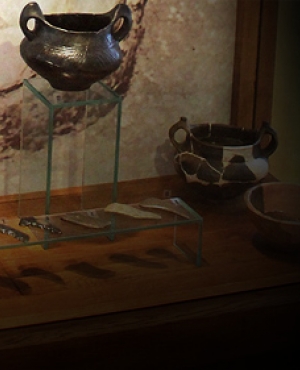
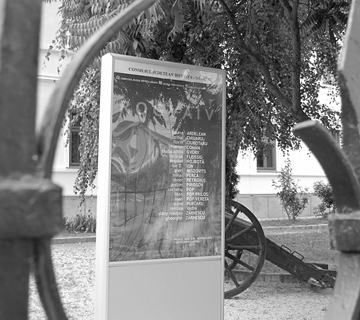 Clipuri Video
Clipuri Video
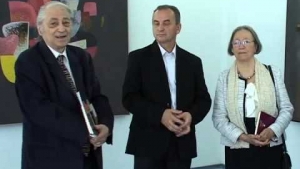
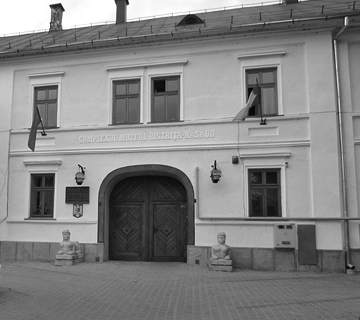 Complexul Muzeal Bistriţa-Năsăud
Complexul Muzeal Bistriţa-Năsăud
